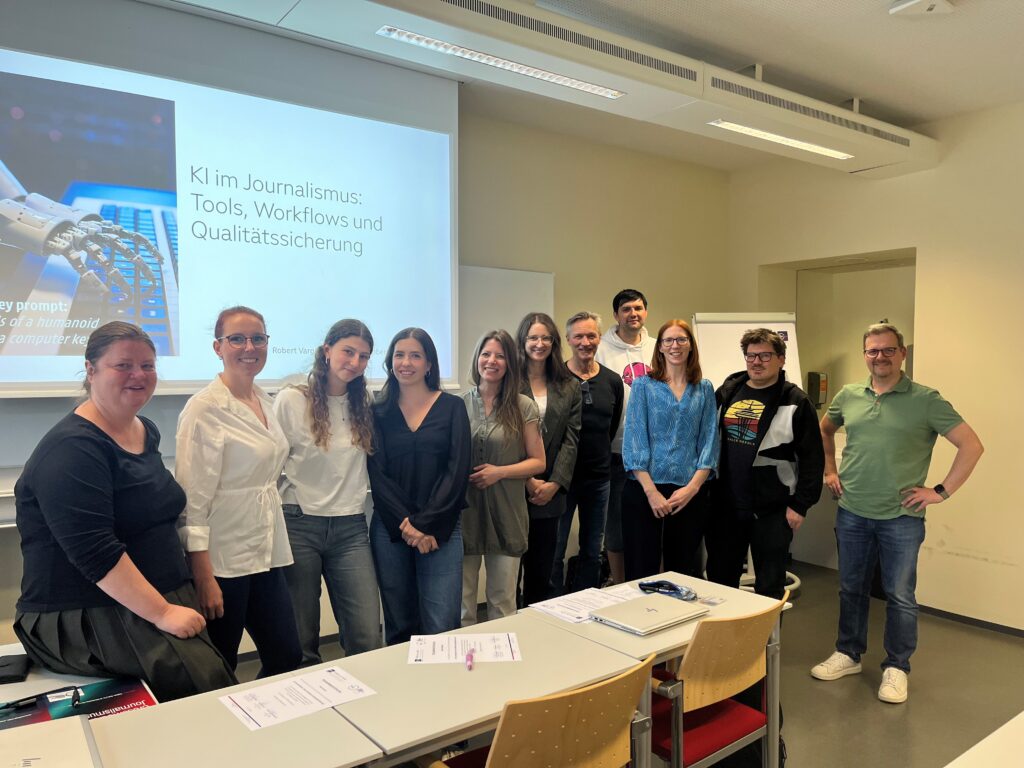At a practice-oriented taster seminar at FHWien der WKW, the diverse application possibilities and challenges of AI in journalism were intensively discussed and tried out by the participants for their own purposes.
Let ChatGPT create news articles? Illustrate TV reports with Sora? Add AI voices to radio news? For many journalists, these are currently no-go areas, as credibility and trust in the profession are at stake. However, the fields of application of artificial intelligence (AI) in journalism are more diverse than one might initially think.
Seminar on AI in Journalism at FHWien der WKW
The seminar “AI in Journalism: Tools, Workflows and Quality Assurance” was offered in cooperation with the continuing education program for cross-media and data journalism at the Vienna Management Academy. Robert Varga, Chief Product Officer at APA, and Jakob Weichenberger, data journalist at ORF, presented in four sessions the possible uses and applications of AI in their media companies. Another focus was on the necessary measures for quality assurance.
Optimierung von Routineaufgaben durch KI-Tools
Routine tasks in the news production process that do not directly involve research or content creation can be streamlined with AI tools. Educators reported positive experiences with automated audio and video transcription, AI-assisted keywording of text, and facial recognition software for photos of celebrities. These applications help store and categorize media content, making it easier for journalists and recipients to find later.
Enhance editorial content with AI
Another area of application is to improve or vary text that has previously been written by editorial staff. AI tools can suggest improvements in proofreading, article titles, or social media posts. The “human in control” principle is important here: AI-modified content should only be published after editorial review. Media companies should also be as transparent as possible – not only in labeling AI-generated content, but also in explaining how AI tools work and what restrictions apply.
Practical tasks in the introductory seminar
During the workshop, participants developed their own ideas and concepts for using AI tools in journalism. The focus was on writing their own chatbots (so-called GPTs) with ChatGPT, as these can facilitate individual work steps. Writing prompts proved to be a challenge. In order to avoid inconsistent or useless answers, it is important to precisely define the goal of the query as well as possible application scenarios and restrictions.
| The seminar “AI in Journalism: Tools, Workflows and Quality Assurance” was offered in cooperation with the Crossmedia & Data Journalism training program of the Vienna Management Academy.
Further information on the new training courses can be found under the following links: |
